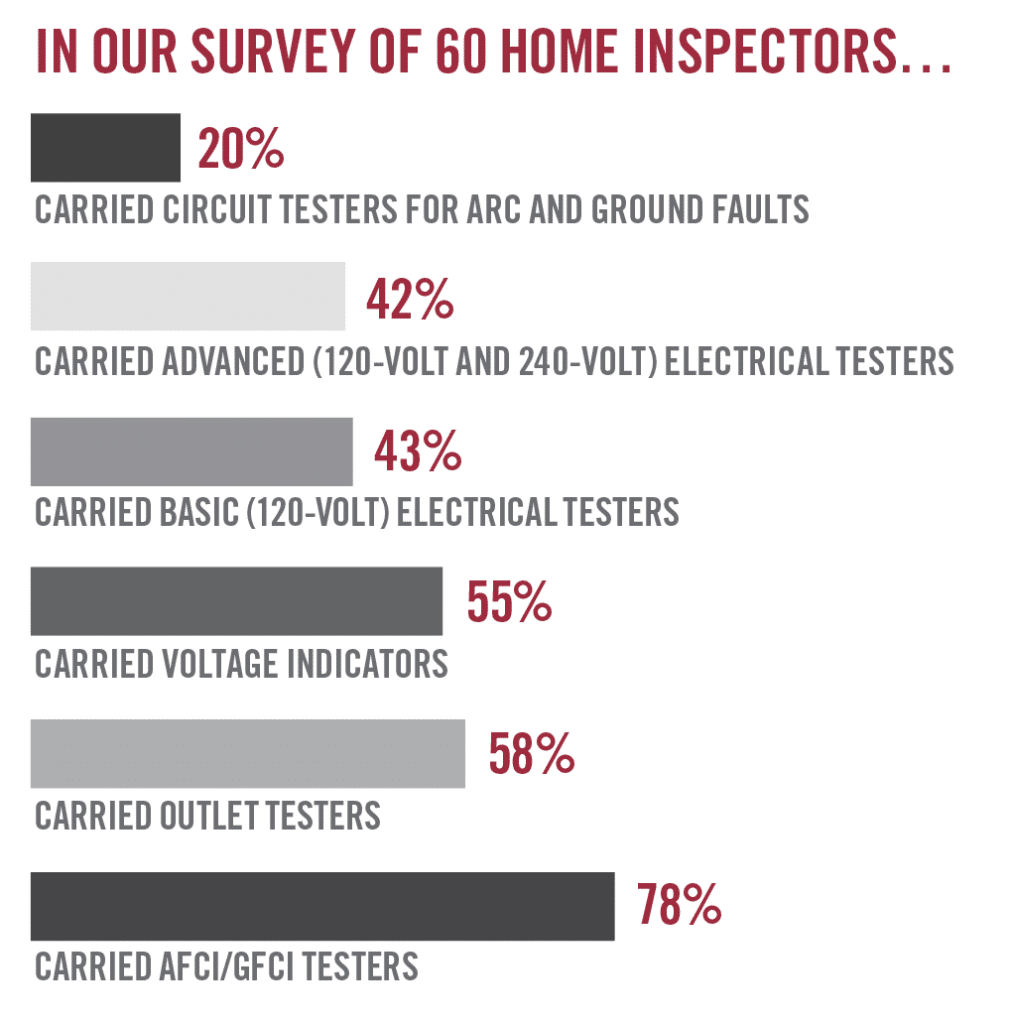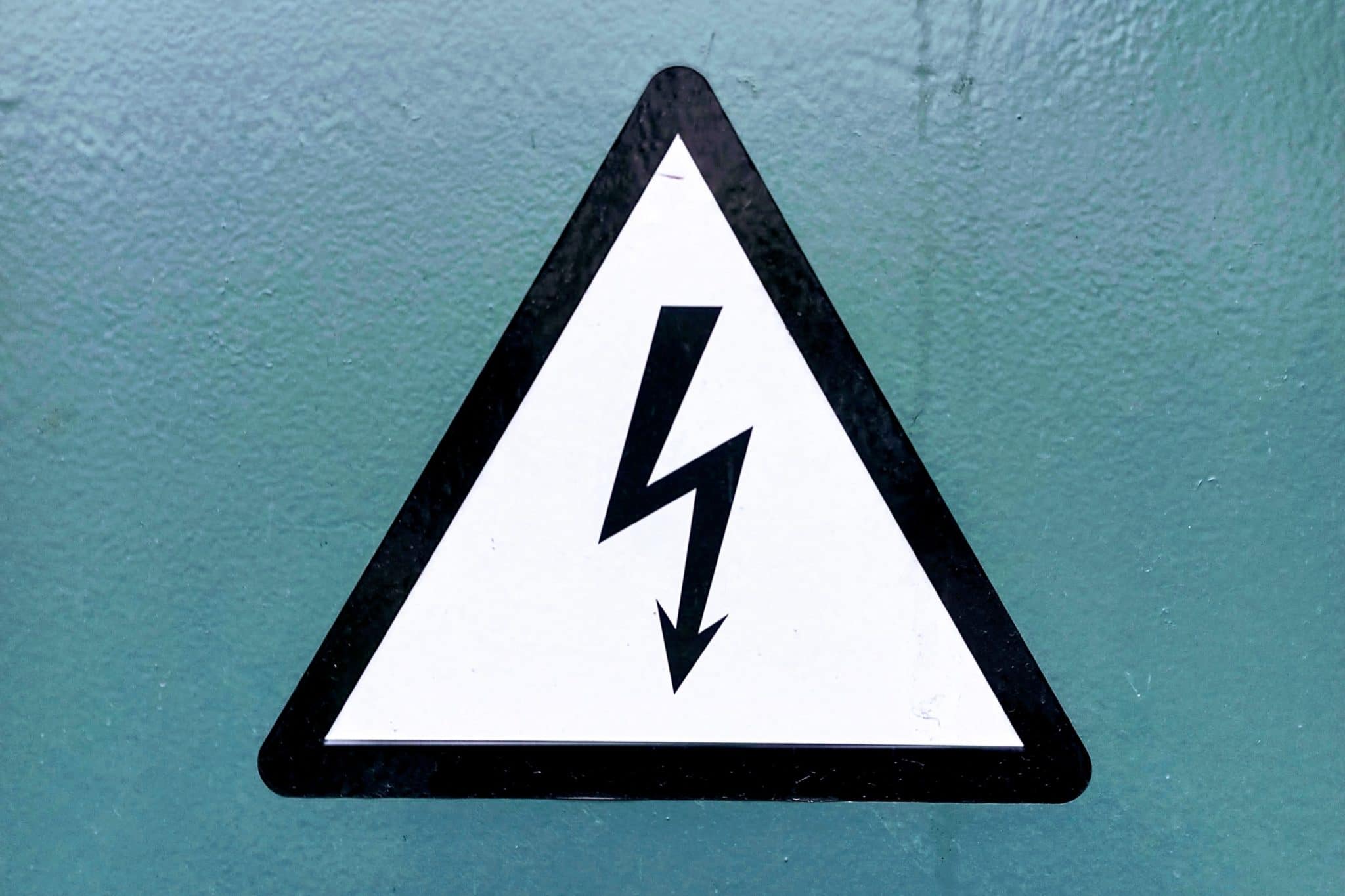Electrical Testers: Which ones are right for your business?
Last Updated November 9, 2023

Last year, with the help of Master Electrician Bruce Janczak, The Milwaukee Journal Sentinel inspected 15 single- and two-family rental properties. All but one of the properties had fire hazards and code violations, including improperly installed or unsafe electrical service panels, no grounding or bonding of the electrical service, and improperly grounded or wired receptacles. Suspected electrical fires impact homes in this same ZIP code at five times the rate of the rest of the city.
Home electrical fires account for an estimated 51,000 fires each year and nearly 500 deaths, according to the Electrical Safety Foundation International (ESFi). Although builders and electricians have a significant role to play, home inspectors do, too. While most residential home inspections will not (and cannot) go into the level of detail and expertise that licensed electricians can, your inspections can still have an impact. Through your investigation of readily accessible, visually observable electrical systems and components, you can help keep your clients safe. This is where electrical testers for home inspectors can help.
Why Use Electrical Testers
Certain electrical testers may seem unnecessary. After all, standard residential inspections are limited and non-invasive. Furthermore, most standards of practice (SOPs) do not require you to report on deficiencies discoverable through electrical testing.
For example, according to the ASHI SOP, home inspectors are required to inspect “ground fault circuit interrupters and arc fault circuit interrupters” and describe “amperage rating of the service” (SOP 7.1.A.9., SOP 7.1.B.1.). However, they are not required to “measure amperage, voltage, and impedance” (SOP 7.2.A.5.)
Some inspectors, like Charles Buell of Charles Buell Inspections, Inc. in Washington, argue that you can’t have one without the other.
“It is not possible to describe the [voltage] of an electrical service without measuring, and inspectors should state this in their reports,” wrote Buell in “Making the Case for Measuring Voltage,” which appeared in the June 2018 issue of the ASHI Reporter. “If we could assume that all the electrical services we check would be nominal 120/240 volts, we could probably get away without measuring voltage…. [But] there is a good chance that you will not be able to tell or confirm whether what you are seeing is a 208 service if you do not measure.”
Thus, home inspectors who choose to carry electrical testers that provide information that go beyond their SOPs do so to provide their clients with additional information. According to Tom Lauhon, chairman of the ASHI Code of Ethics & Standard of Practice Committee—which maintains, updates, and creates new standards for the association—it’s up to every inspector to weigh the benefits of exceeding each standard against increased liability.
“You can go as far beyond the Standards as you feel comfortable. But, when you do, you accept additional liability,” Lauhon said.
Choosing the Right Electrical Testers
There are a number of electrical testers that home inspectors can choose from, the primary of which include:
- Basic (120-volt) Electrical Testers: Frequently found on a retractable keychain, these inexpensive, fundamental testers analyze ground fault circuit interrupters (GFCIs) for common problems. (For example, the circuit is not energized or has tripped off.) These testers often rely on three indicator lamps. Lit up in specific colors and orders, these lamps tell you how the GFCI is functioning.
- Advanced (120-volt and 240-volt) Electrical Testers: While basic testers only check for the presence of 120-volt currents, advanced testers also look for 240-volt currents. Such testers are useful for examining dryer electrical receptacles or housing developments with service laterals fed from three-phase transformers.
- AFCI/GFCI Testers: Unlike their less expensive counterparts, AFCI/GFCI testers check both arc-fault (AFCI) and GFCI devices for about 10 times the cost of the two testers previously mentioned. However, such testers still typically feature basic readings courtesy of three indicator lamps.
- Circuit Testers for Arc and Ground Faults: For about $100 more than AFCI/GFCI testers, inspectors can purchase testers that look for arc fault and ground fault-protected electrical circuits. Such testers can indicate whether such protection devices are functioning properly.
- Voltage Indicators: Sometimes called voltage sniffers, these inexpensive devices detect if wires or components have electrical currents running through them.
- Outlet Testers: Otherwise known as receptacle or socket testers, these three-pronged devices can detect improper wiring when you plug them into an electrical outlet. Like the basic and advanced testers previously mentioned, these circuit testers are usually inexpensive and rely on three indicator lamps.

Desired Features
 When asked what features they look for in electrical testers, the home inspectors we surveyed shared the following:
When asked what features they look for in electrical testers, the home inspectors we surveyed shared the following:
- Reliability: One feature that makes a tester dependable is a long-lasting battery. But even with good battery life, our surveyed inspectors recommend carrying extra batteries in your toolkit. Another consideration is size. Some testers are too big for exterior outlet boxes while others are too small and slick to wear with gloves. Inspectors recommend trying a few types to discover what you prefer.
- Durability: Not all electrical testers hold up well to daily use. Bulbs can fall off cheaper testers. Ground wires can break off ground pins internally. As with most tools, you get what you pay for, so our inspectors recommend opting for more sophisticated testers that will last.
- Readability: It doesn’t do much good to have an electrical tester if you can’t interpret the results. Thus, the inspectors we surveyed valued characteristics like clear readings, legends that don’t wear easily, colored lenses that stay intact, and large display screens.
- Accuracy: Some home inspectors suggest seeking out electrical testers that feature more advanced indicators than the standard three lamps for better results. For example, some three-light testers will not detect bootleg or false grounds.
Limiting Your Liability
When it comes to electrical testers, limiting your liability happens in three ways: staying safe, communicating clearly, and insuring equipment. We discuss each in more detail below.
Get training on how to test safely.
Electrical exposures can be serious—even fatal—if you don’t know how to properly use your testers and if you become overly confident in their abilities.
“[Electrical exposures] can take your life if you’re not prepared,” said Walter L. Williams of PPT Inspections in Michigan in a previous article. “Even if you put an instrument to [a wire] to get a reading or to see if it’s energized, you don’t know what may be lurking behind the [electrical] box.”
Take courses on electrical inspections and safety and read the user manuals for your testers. Dress appropriately with personal protective equipment (PPE), like insulated gloves and rubber-soled shoes. And, if it’s too dangerous, skip it.
For more information on staying safe, check out our article “Electrical exposures: What home inspectors need to know.”
In your agreement and reports, say what you do and don’t do. And be consistent.
As we discussed earlier, measuring voltage isn’t required by the ASHI SOP. Still, you may choose to do it. If you do, say that you’re doing so in your report and be sure to do so at every inspection.
Why is it so important to be consistent across inspections? One instance may hold you accountable in another. This happened in a claim from Mississippi where the inspector didn’t identify wood rot and damage in windowsills. The claimant argued that the inspector should have probed the surfaces. Our argument was that, according to the SOP, the inspector was not required to probe anything.
It just so happened that the claimant’s daughter was his real estate agent, and she had used the home inspector with her other real estate clients in the past. The claimant went through the inspection reports until he found one in which the inspector stuck a probe in the wall that revealed the damage. There was even a picture of the probe in the wall. You can guess how that claim resolved.
If you don’t measure voltage, go beyond citing the ASHI SOP in your pre-inspection agreement. In your report, remind clients that you don’t test for voltage. You may also recommend your clients contact a licensed electrician for voltage testing.
Carry equipment coverage.
 Formally known as inland marine coverage or a commercial property floater, equipment coverage insures your inspection tools and equipment. Unlike standard property insurance, inland marine coverage protects your tools and equipment regardless of their location. This is important since, rather than housing your tools in an office, you have them in your vehicle or onsite.
Formally known as inland marine coverage or a commercial property floater, equipment coverage insures your inspection tools and equipment. Unlike standard property insurance, inland marine coverage protects your tools and equipment regardless of their location. This is important since, rather than housing your tools in an office, you have them in your vehicle or onsite.
Here at InspectorPro, our equipment coverage reimburses you for the replacement cost of your stolen or damaged equipment or tools. Oftentimes, coverage extends to not just items you own but also to items you lease or rent.
If you own inexpensive electrical testers, you may be thinking it isn’t worth carrying equipment coverage for them. However, for any items worth less than $1,000, our equipment coverage allows you to cover the property as miscellaneous tools. Just make sure the total value of all those tools doesn’t exceed $3,000. Adding together all the items in your toolkit and inspection vehicle, you’d be surprised how much you can insure.
To learn more about inland marine coverage, read our article “How to protect your tools and equipment.” Current clients can request equipment coverage by contacting their InspectorPro brokers. Prospective clients can apply for insurance via our online application.
Electrical Testers for Home Inspectors
Interested in offering your clients more information about their properties’ electrical systems and components? Consider using one or more of the electrical testers we discussed to report potentially costly or hazardous defects.





